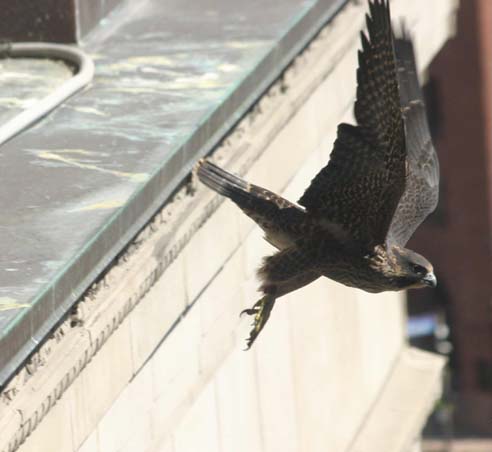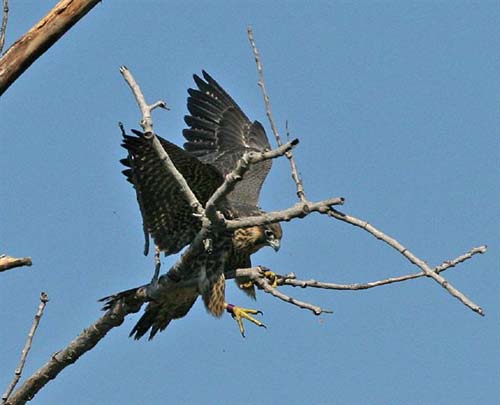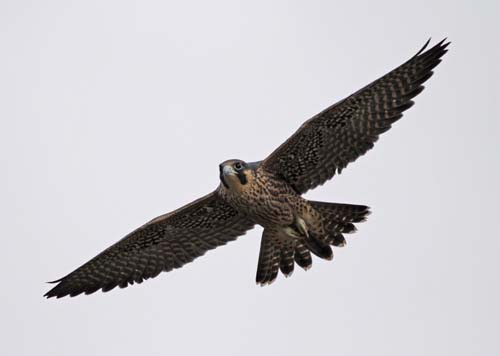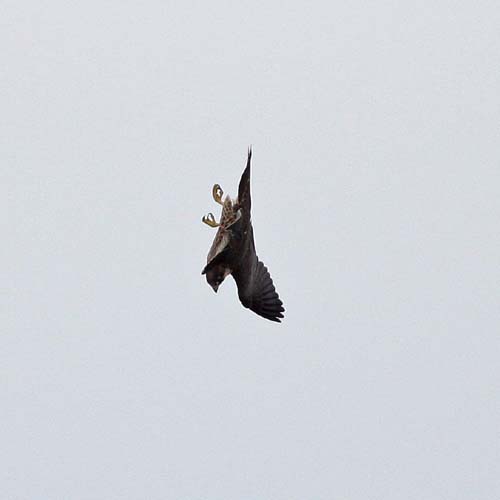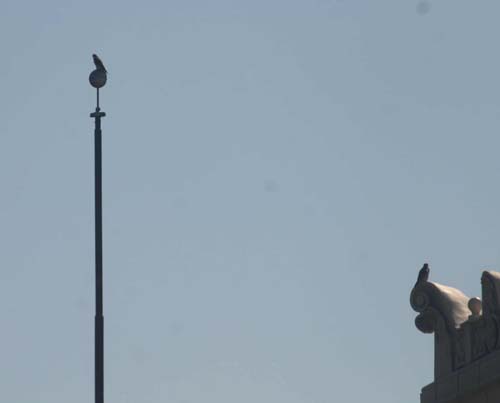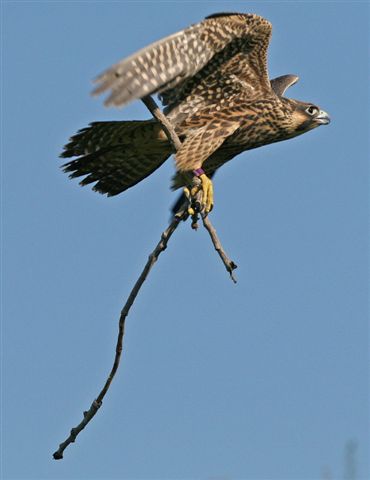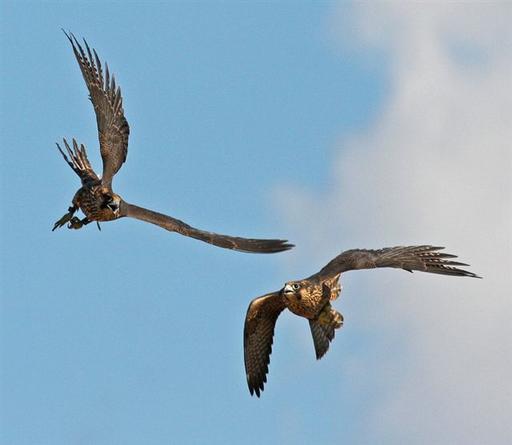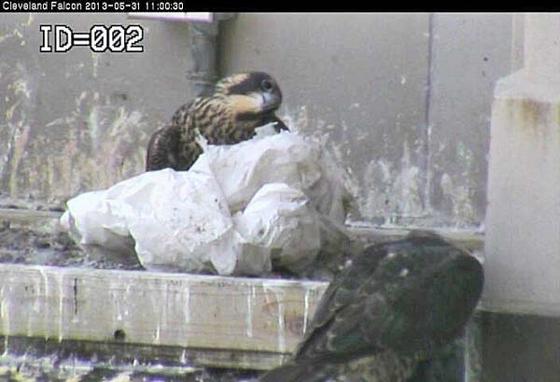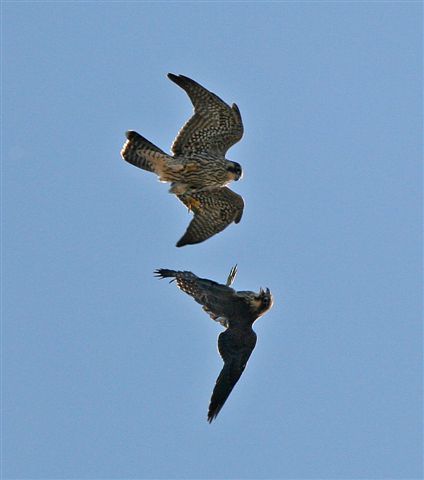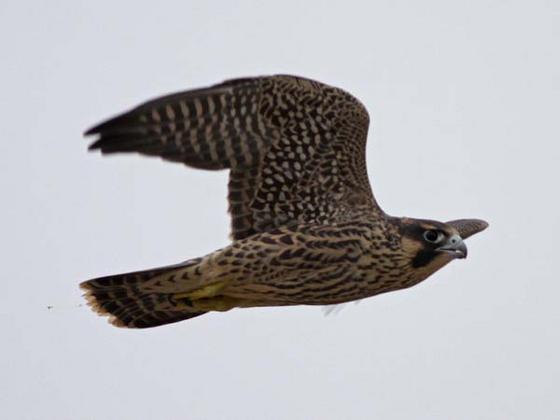FALCON FLASH
Dateline: Cleveland, Ohio
June 17, 2013
Click here to read what happened earlier
This draws the 2013 Raptors in the City program to a close. Be sure to join us early next year when the cycle of life begins again. Will the aging SW be able to keep control of her nestsite? What new dramas will unfold?
Our thanks to the Cleveland Museum of Natural History for sponsoring the FalconCams. Learn more about the museum at: http://www.cmnh.org/
Our special thanks to Scott Wright, volunteer peregrine nest monitor for the Ohio Division of Wildlife, for his many years of care and concern for the survival of the species at this nest site. Thanks to Mr. Wright for the pictures today of Tess practicing taking off, and of SW on the flagpole – and for the generous use of his fabulous photos throughout the years.
Thanks also to volunteer peregrine nest monitors Mr. and Mrs. Saladin for their descriptions and file photos of juvenile flying behaviors - and for all their service, care and concern for the species peregrine falcon.
In addition, our thanks to all people who have contributed to saving the species peregrine falcon in North America. With the help of people from all walks of life, the species is returning to health after nearly becoming extinct in North America.
Photos may be used in any non-commercial publication, electronic or print, but please give photo credit.
Ginger and Tess are now flying successfully and, in fact, soaring high in the sky.
They will stay close to the nestsite for the next month or two, and SW and Boomer will watch over them, feed them, and help them learn hunting and flying skills. They will practice take-offs…….
and landings......
soaring and gliding……
And how to do the fastest maneuver of all, the straight-down dive called the stoop.
Now that they have fledged, the girls will be practicing juvenile peregrine behavior which includes chasing their parents in the air as they both seek food and practice aerial skills. In the following picture, SW perches on a flagpole as a fledgling stays nearby on the 15th floor.
Mr. and Mrs. Saladin continue, “During aerial play, you often get to see their skill development, as the juvies chase and grab for one another in flight, simulating hunts and aerial defense. They also imitate aerial food exchanges with one another, positioning underneath and inverting to touch feet-to-feet in mock exchanges”.
Nest monitors, Mr. and Mrs. Saladin tell us, “The juvies become progressively more aggressive toward the adults, and the adults, in turn perch in less conspicuous places and often try to hide from the juvies. The juvies chase adults even after they have recently eaten and mantle their prey from adults and siblings to keep it from being taken. As juvies get more advanced the parent will drop prey for them to catch and will even bring in live, wounded prey, so that the juvies can practice chasing and catching. They also go on "family hunting forays" where the adults and juvies cooperativly hunt”.
Mr. and Mrs. Saladin describe juvenile flying behavior: “They grab at leaves, and snap twigs off of dead trees. They often snatch butterflies, dragonflies, and insects as their initial prey items and eat "on the wing”…...
They also play at “mock combat” to practice fighting skills. Peregrines are fierce predators and will fight to protect their territories.
The family will stay together for several months as the girls learn to be self-sufficient, but Soon Ginger and Tess will begin their own lives and fly to parts unknown. Since they wear bands, we may find out what happens to them. Where will they go and how will their lives turn out?
Like children of any species, young peregrines like to play. Here is a picture taken from the falconcam just before fledging. A large piece of plastic that had been part of the nestbox setup came loose, and the girls played with it.

